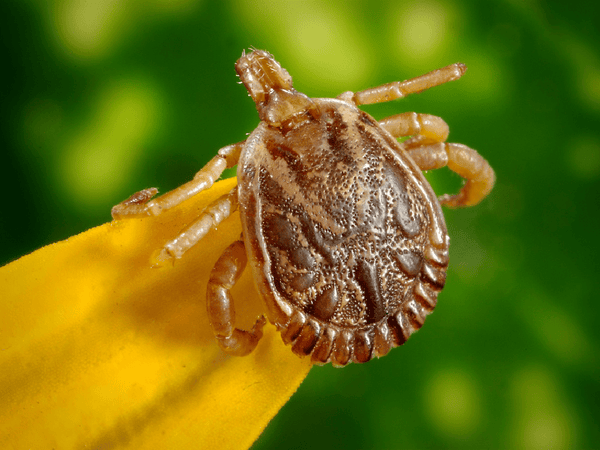Cayenne Tick

Name of Tick: Cayenne tick
Danger Level: High
Nicknames: No other names for this tick
Scientific Name of Tick: Amblyomma cajennense
Habitat: southern and western United States, South America, Central America, the Caribbean
Specific Habitat: The Cayenne tick lives in grassy areas and wooded areas, it can be found in fields or at the edges of trails. The Cayenne tick has a wide variety of habitats and infestations will occur where there is a high density of preferred hosts. Preferred hosts include horses, coyotes, dogs, rabbits, deer, sheep, feral swine, and humans. The Cayenne tick is commonly found in low lying grass or shrubs, but it will also climb trees.
Tick Facts and Information: The Cayenne tick has three life stages, larvae, nymph, and adult. Cayenne tick larvae are most aggressive during early spring but are a threat all the way through October, after finding a victim and feeding they will drop off the host animal and develop into Nymphs. Some information suggests nymphs may be most active during the spring and summer month, but they are a threat year-round, after feeding on a host they will fall off and develop into adults. Adult Cayenne will attach to a host and feed for several days before dropping off. Female Cayenne ticks can lay a scary amount of eggs, up to 20,000 per tick. Female Cayenne ticks die after laying eggs. The Cayenne tick hunts by questing. The Cayenne tick has extremely long mouth parts as compared to other ticks, as a result the bite of a Cayenne tick can be very painful and will often cause inflammation and discomfort at the spot of the bite. A bite from the Cayenne tick can cause debilitating disease and result in death.
Tick Color and Appearance: Adult females are dark brown with a tan scutum and dark brown pattern which resembles a pendant necklace. The adult male Cayenne tick will range in appearance and can be golden, rust colored, or beige, they commonly have patches and mottling.
Size and Number of Legs: The average adult Cayenne tick is 1/8 of an inch, size will vary greatly during the tick’s life cycle. Larvae have 6 legs, nymphs and adults have 8 legs.
Diseases Transmitted: Rocky Mountain spotted fever, Theileria equi
Control Solution: Tick Proof Repellent
Full Scientific Classification: Kingdom: Animalia, Phylum: Arthropoda, Class: Arachnida, Order: Ixodida, Family: Ixodidae, Genus: Amblyomma, Species: A. cajennense
